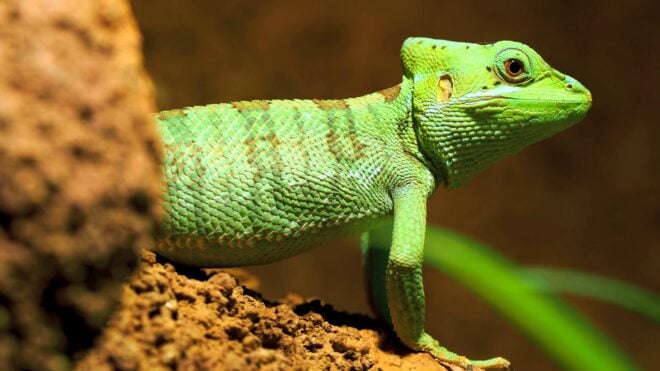If you’re like me, you love to share your favorite foods with your best friend (aka your dog). I especially love eating apples: raw, baked, sauced, or in apple pies. Any way you can slice them, I eat them — they’re delicious and so nutritious!
An apple a day keeps the doctor away, right? But is the same true for your dog? Does an apple a day keep the vet away too? Can dogs eat apples?
Not all fruits and vegetables are healthy and safe for dogs to eat. Some human foods — including onions and grapes — are actually poisonous to dogs. Because they have different digestive tracts, lifestyles, and needs from humans, the things that are good for us can sometimes do them harm.
Below, we’ll go into detail about whether or not you should let dogs eat apples or if they're actually toxic to your pet.
Are Apples Safe For Dogs To Eat?
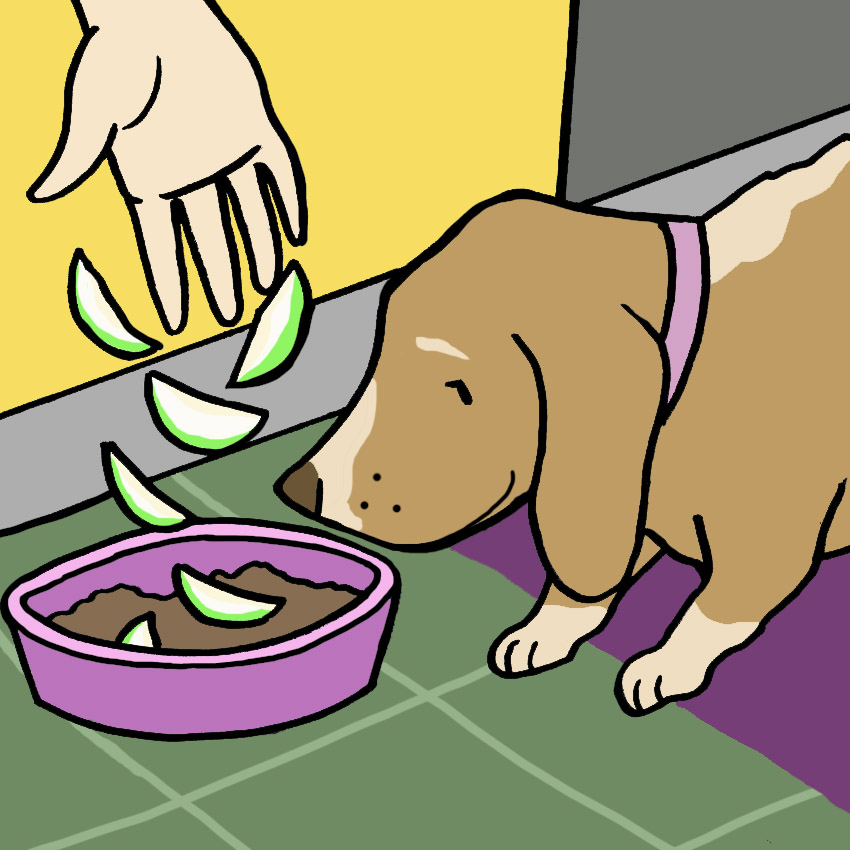
Can dogs eat apples? Yes, they can.
Apples are almost 100 percent healthy for dogs and are filled with many nutritional benefits.
However, not all parts of an apple are safe for dogs to eat and there are some possible side effects you need to know.
Benefits And Possible Side Effects Of Feeding Your Dog Apples
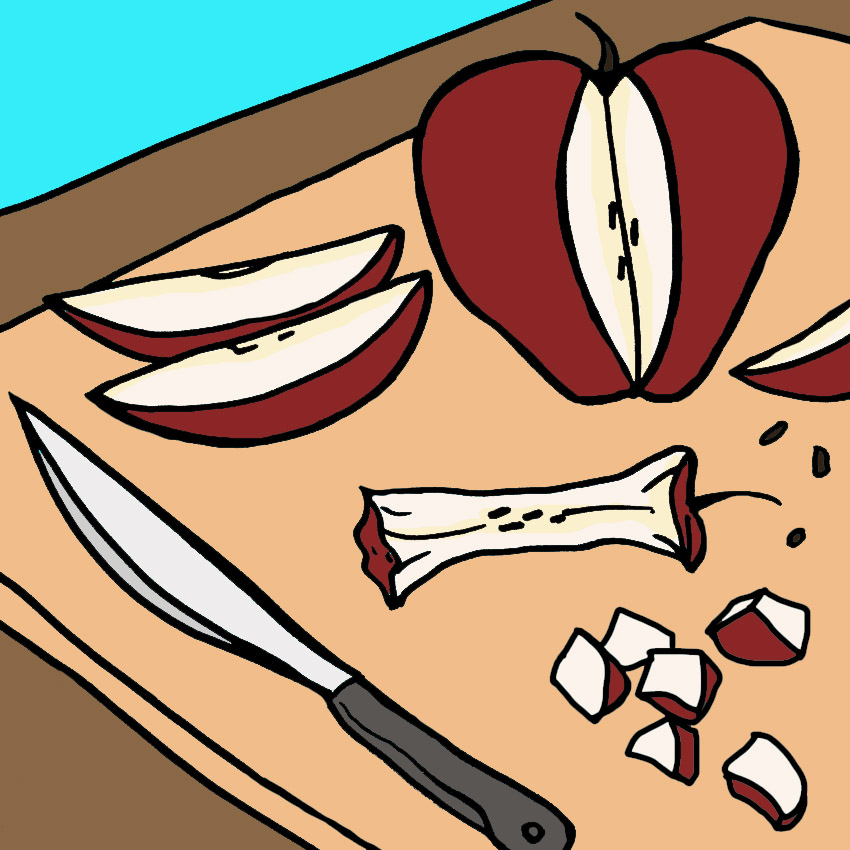
It's probably no surprise to anyone, but the skin of an apple contains more nutrients than the rest of the apple.
The U.S. Department of Agriculture says the skin has a higher percentage of fiber, potassium, and other nutrients — but there are plenty of these in the flesh of the apple as well!
Apples with the skin are loaded with phytonutrients that are recommended for humans because of their cancer fighting properties. Apples contain vitamins C and A, antioxidants, and dietary fiber.
They are also a good low-calorie snack for dogs instead of high-fat, store-bought treats.
Apples also help keep a dogs' teeth clean as well as freshen their breath, and the fiber in apples can contribute to overall gastrointestinal health.
Apples can be good for both old and young dogs to eat, but for different reasons.
“Some senior dogs, or dogs prone to certain illnesses, must limit their meaty treats due to protein restrictions, or stick to a low-fat diet. Apples, being low in protein and fat, make a great treat substitute for these dogs,” Dr. Oscar E. Chavez, DVM and chief medical officer of JustFoodForDogs told PetMD.
For your younger, more active dog, Dr. Chavez suggested feeding them apples because of the antioxidants and vitamin C, believed by some vets to help with degenerative conditions like joint disease.
Although apples contain many nutrients, you should feed them to your dog in moderation. Vomiting and diarrhea can occur if they eat too many. Check with your vet before feeding your dog apples as you may be advised to avoid them depending on your their particular health needs. There is also plenty of natural sugar in apples, so dogs with diabetes may need to avoid eating them.
What Parts Of An Apple Can Dogs Eat?

Dogs can safely eat the skin of an apple and the flesh of an apple, but should not eat the core or seeds.
The apple core can be a choking hazard and seeds contain cyanide, so you don’t want to let those near your pet. The leaves and stem can be potentially poisonous to dogs, so don’t allow yours to eat those parts.
If your dog does accidentally consume the core, seeds, stem, or leaves of an apple, call your vet immediately.
What Kinds Of Apples Can Dogs Eat?
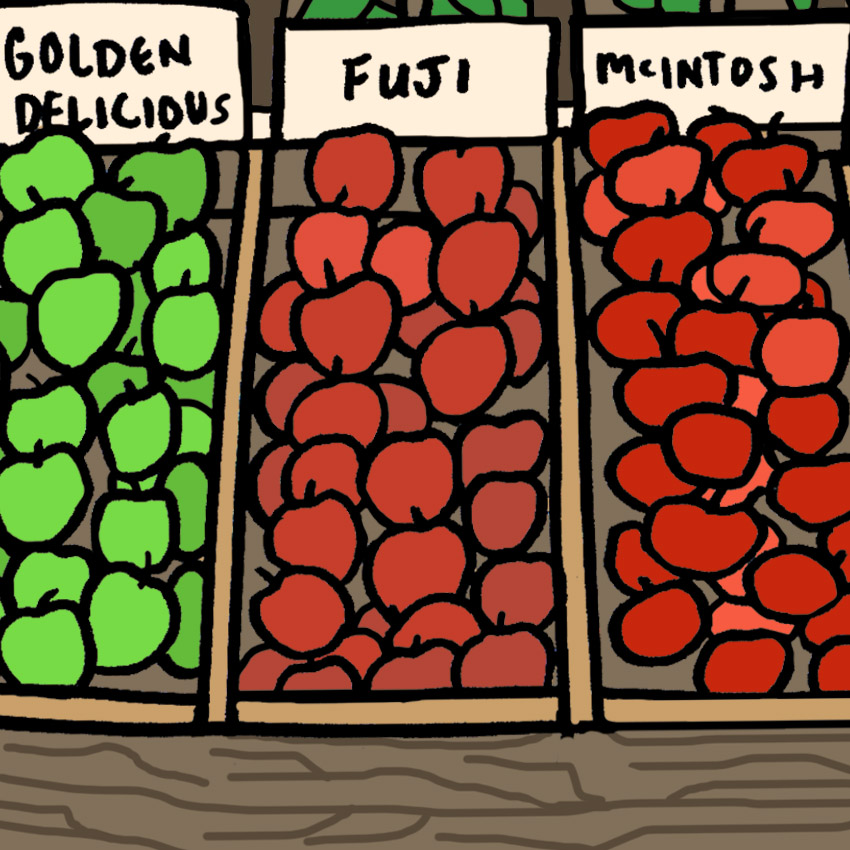
Dogs can eat any kinds of apples we can, including red and green apples. If we can eat them our dogs can enjoy them, too.
One important distinction, however, are crabapples, which aren’t really apples.
According to Livestrong, crabapples have a “sour, pithy taste” and “despite their unpleasant sharpness, crabapples generally aren’t dangerous… might give you a sore stomach if you eat a few, but they won’t cause poisoning… Like regular apples, their seeds do contain toxins.”
However, crabapples may be more dangerous to our pets than to us. According to the ASPCA, if a dog eats a lot of crabapples — including the stems, seeds, and leaves — they could show signs of cyanide poisoning.
Crabapples are members of the apple family, so they do still have the same poisonous seeds, and possibly stems and leaves.
How Should Apples Be Prepared For Dogs To Eat?
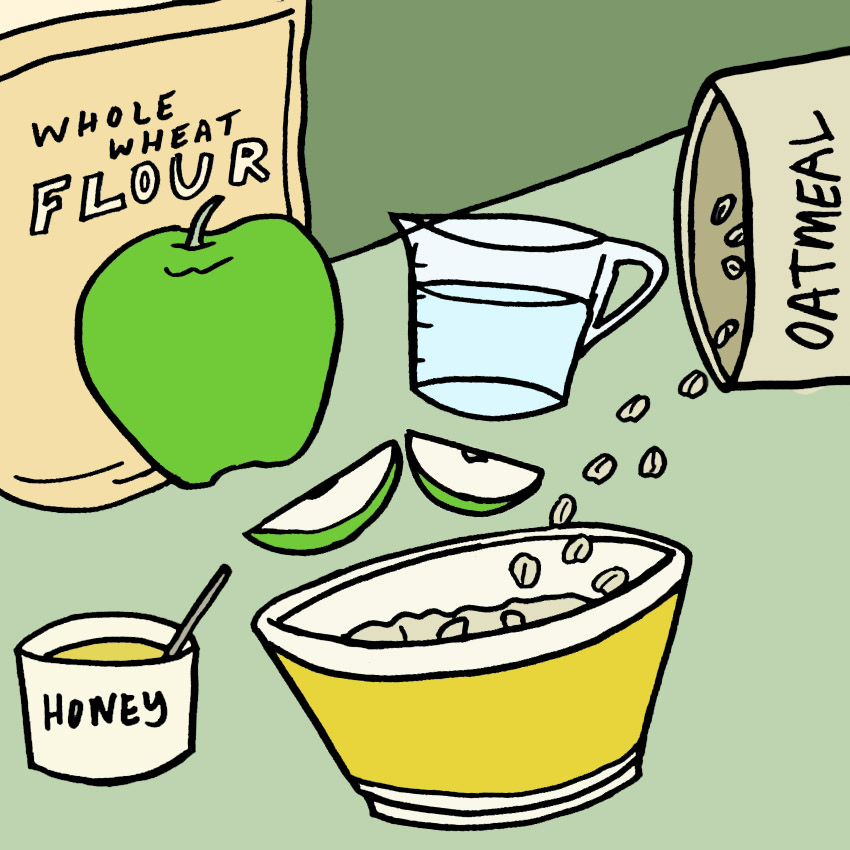
Apples can be prepared many ways for dogs to eat. All the ways you love, they’ll probably love too.
The delicious taste of apple pie, apple sauce, apple juice, apple anything is wonderful, but you need to remember that your dog doesn’t need too much sugar, so the best way to feed them apples is fresh apple slices – with no core, no seeds, no stems, and no leaves.
Dogs should not be fed dried apples or any other dried fruit either, as the lack of water can make them dehydrated.
How much apple should your dog eat? You need to be careful to not feed your dog too much apple.
Your dog gets most of their needs met with dog food, and treats (even healthy ones like apples) should be enjoyed occasionally.
Watch them carefully and monitor what you let them have, remembering that dogs are just like little kids sometimes, and they eat way past what they should, given the opportunity.
Frozen Apple Dog Treats
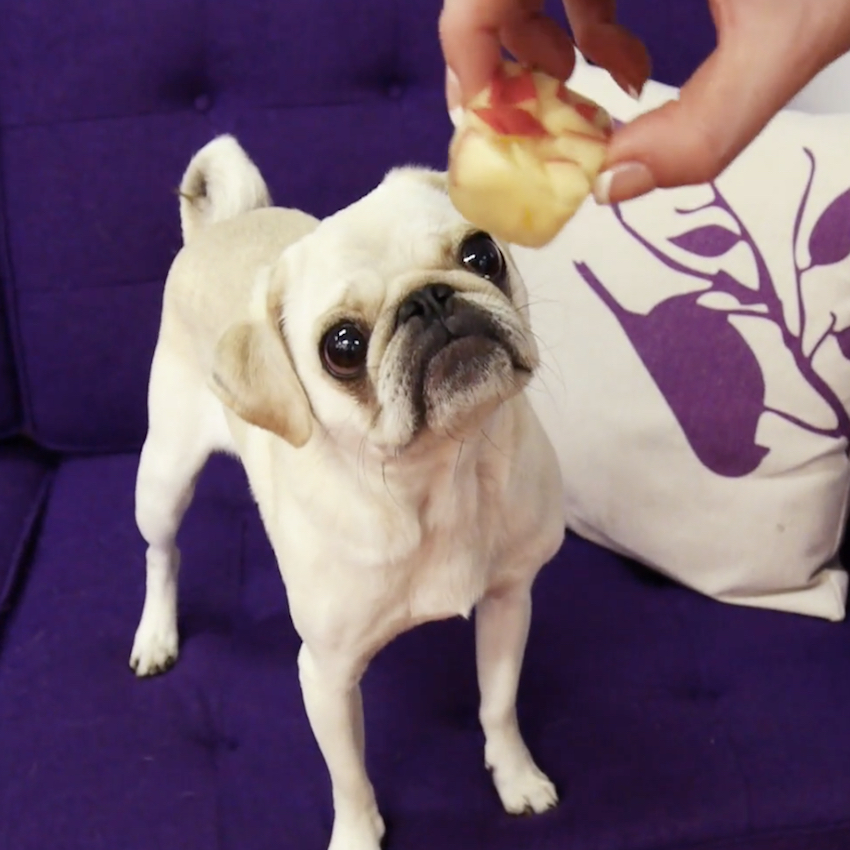
Here's a healthy apple dog treat recipe you can make at home. I plan to make these for my dog this summer to help keep him cool.
Ingredients
- 1 Apple
- Chicken Broth
Instructions
- Cut the apple into small strips.
- Place the apple slices into an ice cube tray.
- Pour chicken broth into ice tray.
- Freeze.
- Feed to your furry friend on a hot summer day.
If you have enjoyed this article and found information that is helpful to you in caring for your best friend, please SHARE this article with other dog owners!



